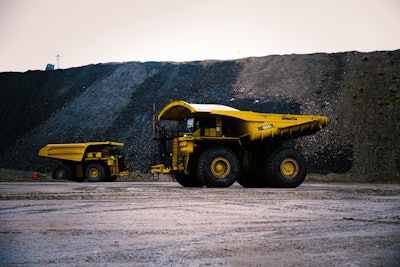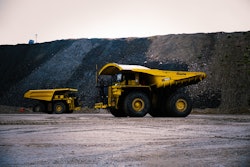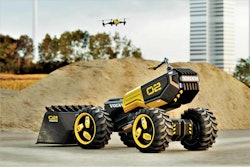 Photo: Wayne Grayson
Photo: Wayne GraysonKomatsu America reports that it now has the mining industry’s first autonomous haulage system qualified to run on private LTE mobile broadband technology in commercial operations.
Komatsu says the industry has been moving from wireless technology, such as Wi-Fi, toward LTE (long-term evolution) technology, which is more reliable, secure and has higher capacity.
Komatsu paired with Nokia to undergo a yearlong qualification process on LTE at Komatsu’s proving grounds in Tucson, Arizona. The company said it tested its FrontRunner AHS, designed to pilot ultra-class mining trucks with GPS navigation, on Nokia’s Future X LTE infrastructure.
The LTE milestone follows Komatsu’s announcement in November that FrontRunner-equipped trucks had moved more than 2 billion tons of surface material autonomously since the system was first deployed commercially in 2008 at the Gaby copper mine in Chile. The company reports it has 130 mining trucks equipped with FrontRunner and that 150 more will be deployed over the next seven years to Canada’s oil sands. The system is also in use in at mines in Australia.
The company says it is also working to enable manned trucks of any make and its FrontRunner trucks to work together in blended operations, as well as working with others in the industry to standardize interoperability between Komatsu and non-Komatsu autonomous vehicles.
Komatsu autonomous mining trucks are equipped with an obstacle detection system, which causes them to reduce speed or stop immediately to prevent collisions with other equipment or a person, and they are controlled by computer operators in a control center. The computer sends information wirelessly for the job and sets the trucks’ speed and guides them to loading and dump sites where they are met by GPS-fitted excavators or wheel loaders.
Komatsu says AHS increases safety, productivity and efficiency, while reducing costs.
Nokia’s Future X system uses industrial internet of things, cloud, artificial intelligence, machine learning, augmented and virtual reality and a high-performance network that includes 5G, Nokia says. The system can connect sensors, equipment, vehicles and workers. It can also increase capacity when needed for augmented reality and mine-site video consultations and employs predictive analytics for managing assets and operations, Nokia says.










